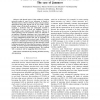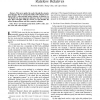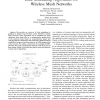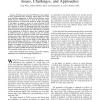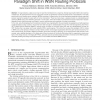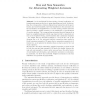145
Voted
COMSUR
2011
14 years 24 days ago
2011
—The shared nature of the medium in wireless networks makes it easy for an adversary to launch a Wireless Denial of Service (WDoS) attack. Recent studies, demonstrate that such a...
134
click to vote
COMSUR
2011
14 years 24 days ago
2011
—This survey guides the reader through the extensive open literature that is covering the family of low-density paritycheck (LDPC) codes and their rateless relatives. In doing so...
124
click to vote
COMSUR
2011
14 years 24 days ago
2011
Interference is an unavoidable property of the wireless communication medium and, in sensor networks, such interference is exacerbated due to the energy-starved nature of the netw...
145
Voted
COMSUR
2011
14 years 24 days ago
2011
Sensor networks with battery-powered nodes can seldom simultaneously meet the design goals of lifetime, cost, sensing reliability and sensing and transmission coverage. Energy-har...
137
Voted
COMSUR
2011
14 years 24 days ago
2011
Abstract—We provide an overview of link scheduling algorithms in Spatial Time Division Access (STDMA) wireless mesh networks. These algorithms can be classified into three categ...
136
Voted
COMSUR
2011
14 years 24 days ago
2011
—Wireless sensor networks (WSNs) have been applied to many applications since emerging. Among them, one of the most important applications is Sensor Data Collections, where sense...
117
click to vote
COMSUR
2011
14 years 24 days ago
2011
—In large networks, a data source may not reach the intended sink in a single hop, thereby requiring the traffic to be routed via multiple hops. An optimized choice of such rout...
151
click to vote
COMPSYSTECH
2011
14 years 24 days ago
2011
Abstract. In a software watermarking environment, several graph theoretic watermark methods encode the watermark values as graph structures and embed them in application programs. ...
119
Voted
ATVA
2011
Springer
14 years 29 days ago
2011
Springer
In [AKL10], we showed how viewing online algorithms as reactive systems enables the application of ideas from formal verification to the competitive analysis of online algorithms....
129
click to vote
ATVA
2011
Springer
14 years 29 days ago
2011
Springer
Abstract. In the traditional Boolean setting of formal verification, alternating automata are the key to many algorithms and tools. In this setting, the correspondence between dis...
